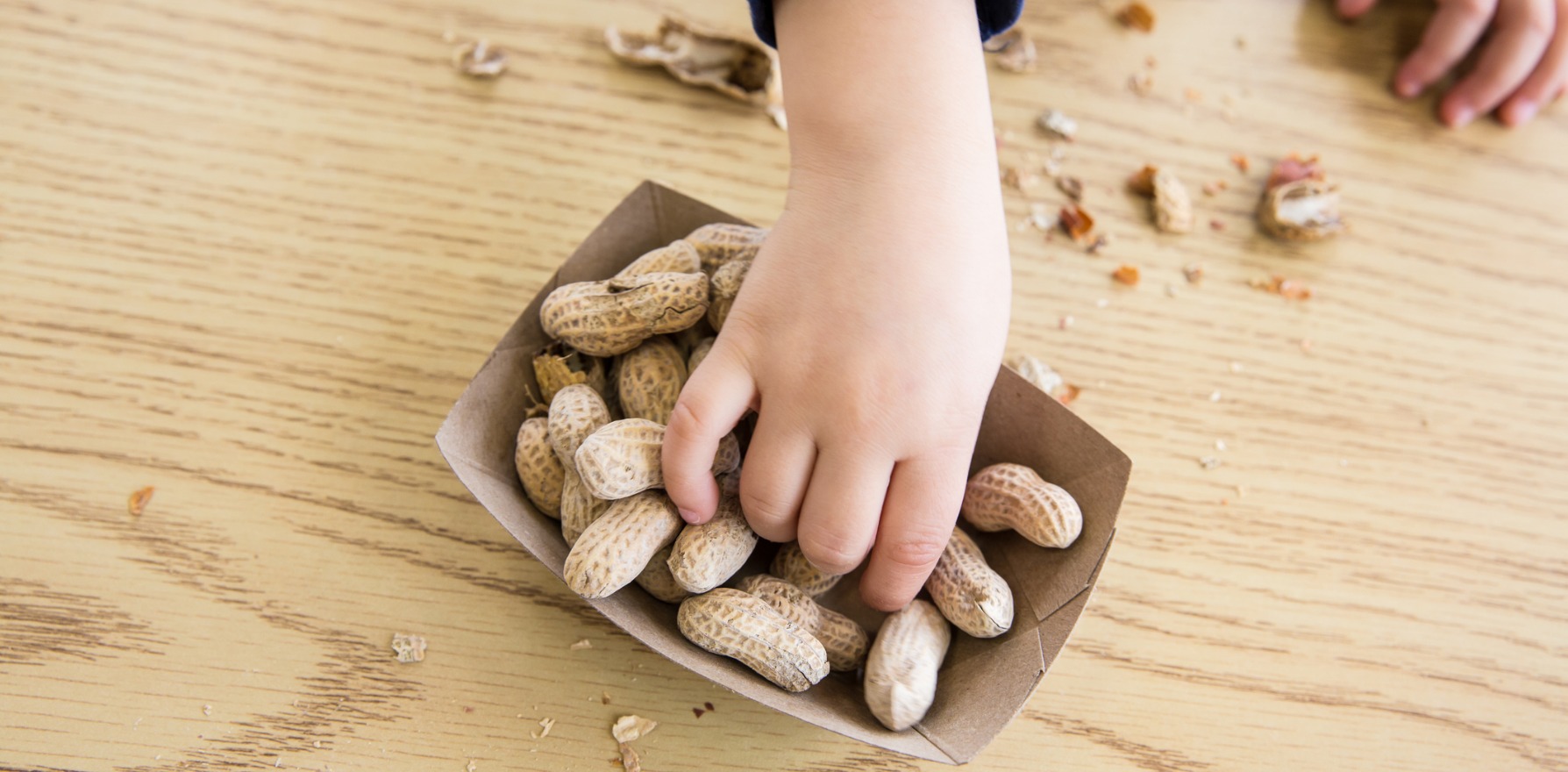Experts still back the early introduction of potential allergens, and say shifting demographics may be to blame for the surprising findings.
Peanut allergy rates didn’t decline in Melbourne babies after the guideline change, but researchers attribute that to demographic shifts rather than a failure of the new scheme.
The good news was that allergy rates have finally stopped increasing too, which experts say is thanks to the new feeding advice.
Recent Australian research found that hospitalisations from food anaphylaxis dropped after guidelines began encouraging parents to feed their children potential allergens before 12 months of age.
So the authors of the new study, published in JAMA, aimed to measure the change in prevalence of peanut allergy overall in Melbourne infants after the 2008 ASCIA guidelines were introduced.
These guidelines overturned previous advice to delay giving those foods until after 12 months to prevent peanut allergy, which is one of the most common food allergies in children. The only evidence-based way of preventing peanut allergy is the early introduction of peanut in the diet.
The researchers assessed the rates of peanut allergy among 12-month-old infants in Melbourne at two separate time points, 10 years apart. The first group of 5200 infants were given skin prick tests to peanut, followed by an oral food challenge if positive, in 2007-11, and the second group of almost 2000 infants underwent the same tests in 2018-19.
While the Melbourne study found that peanut allergy rates did not decrease overall, it recorded differences between allergy rates among children of Australian and East Asian ancestry.
The 2018-19 group included a higher proportion of children of East Asian descent who were born in Australia, who are known to have a higher risk of peanut allergy.
“Earlier age of peanut introduction was significantly associated with a lower risk of peanut allergy among infants of Australian ancestry in 2018-2019 but not significant among infants of East Asian ancestry,” the researchers wrote.
Dr Victoria Soriano, first author of the study and research officer at the Murdoch Children’s Research Institute, said rates of peanut allergy didn’t change over the 10-year period, even though there were more children of East Asian ancestry who have a higher risk of peanut allergies.
“Therefore, we hypothesised that widespread early introduction of peanut products in infancy may have blunted the rise in peanut allergy that otherwise would have occurred.
“In East Asia, infants of East Asian ancestry don’t have a higher likelihood of having allergies. But once they’re in Australia, there’s something about the Australian environment that interacts with their genetic susceptibility and makes them much more likely to have food allergies and eczema.”
Dr Soriano said genetic susceptibility in infants of East Asian ancestry could be stronger than the protection of early peanut introduction.
Across the whole group, there was also less prevalence of peanut allergy in those who had peanut early, versus those who didn’t, she said.
Early peanut ingestion was still important to prevent peanut allergy, Dr Soriano said.
“If you introduce peanut early, your child is less likely to have a peanut allergy. We want parents and medical professionals to continue following the current guidelines.
“However, we’ve shown that peanut introduction alone isn’t likely to be sufficient to completely eliminate peanut allergy, because there are other environmental factors at play.”
Dr Soriano said the good news was that allergy rates had stabilised overall instead of increasing.
“We think the early introduction of peanut has a strong role in the fact that peanut allergy hasn’t increased, and it’s the only protective factor that’s changed.”
It was positive news that allergy rates had not risen, said Maria Said, the CEO of Allery & Anaphylaxis Australia and co-chair of the National Allergy Strategy.
But more research was needed into other environmental factors, because diet was just one aspect of the big picture, she said.
“We’ve always thought that it was a combination of environmental factors that affect the increase in prevalence of food allergy in Australia.
“The maternal gut microbiome of the mum, the baby’s exposure to microbes in their early life, and vitamin D levels of both the mother and baby all have an impact.”
Ms Said said parents should continue following the same advice and introduce common allergy causing foods at around six months, not before four months, when the baby’s ready, and before they turn one.
“We need to do more to encourage parents to do that and then support them in how to introduce those foods before 12 months.”
Parents should focus on those foods that are regularly eaten by the family, and then keep those foods in the baby’s diet a few times a week, she said.


